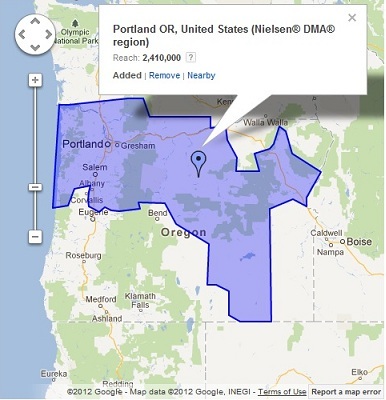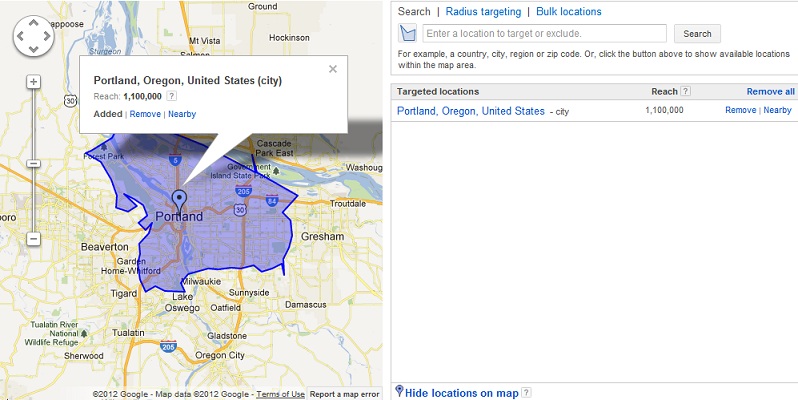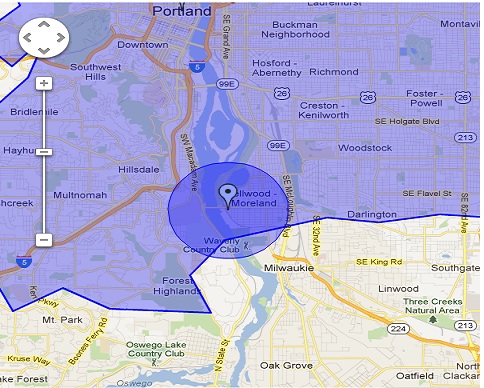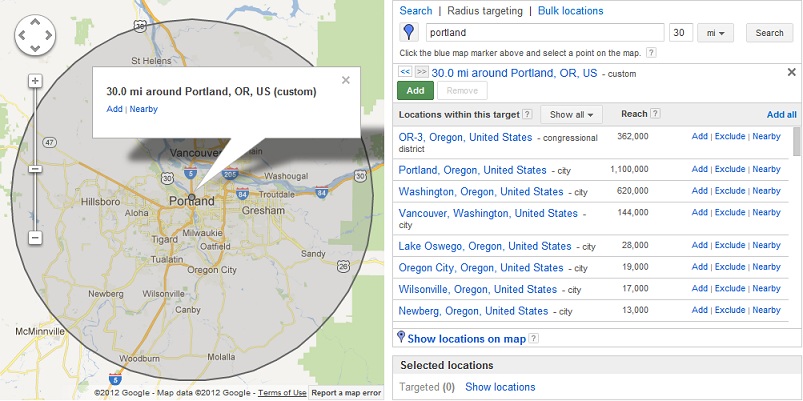Have you noticed any of the new geographic targeting options for AdWords? Perhaps more importantly, are you sure that the location targeting of your campaigns hasn’t changed? If you were targeting metro areas within the United States, you are NOT any more! Now, the only option is to use Nielsen DMA geographic targeting.
Here is an example of what the new Portland, Oregon Nielsen DMA looks like:
That’s right, the Portland Metropolitan area now extends to Idaho and California! The previous metro area targeting went well beyond the city of Portland of course, but was far closer to the actual geographic metro area. This is a very good thing for large advertisers who want to coordinate their television and PPC campaigns, but leaves something more to be desired for smaller or medium sized local businesses.
Here is an example of what city targeting for Portland looks like in comparison:
That’s an exceptionally literal interpretation of Portland, down to the street where the city officially begins or ends (depending on how you are looking at it). Given that location targeting is in no way perfect, this is just a bit too restrictive for a client looking to reach out to the entire city.
What’s a business like Tom Dwyer Automotive to do? The blue circle is a one mile radius around the location, the rest of the blue is the border of the Portland city targeting reach:
You can easily see that the proximity to the edge of the city limits, and the targeting issues that could result if you used city targeting only. Potential customers literally close enough to push their vehicle to the shop may not be able to see an ad for Tom Dwyer Automotive, if the Google machine determines the device signals to be outside of the city.
You can also target congressional districts or zip codes, so there are still more targeting options available that the Google machine actually recognizes, but it’s a lot of work to include all those areas! It seems like in this case, radius targeting is the best way to go… Seems.
My concern, is that knowing location targeting is not perfect, how does the Google machine interpret device location signals within a custom radius based of a random point on the map a human user selects? Here’s another option – Selecting a radius around the city of Portland.
Now we’re talkin! This is a much more accurate representation of the actual Portland, Or. metropolitan area. Yes, I’m still using radius targeting, but I feel much better about the Google machines ability to interpret my geographic targeting intent, because I am targeting a radius around a location the Google machine thinks exists. Select radius targeting, enter the primary city of the metro area you want to target, click search, and experiment with the radius until you find an acceptable reach for your campaigns. If you want to quickly and easily apply these changes to multiple campaigns, just copy and paste the location targeting from one campaign to the others using the AdWords editor.
Portland Oregon is a specific case. You may find that that the new Nielsen DMA targeting is a far more accurate representation of your target market than any other pre-set targeting option AdWords has ever offered before. For those of us small in smaller TV markets, Nielsen is of course going to expand the DMA area to include more people (more aggregate data, more ad revenue), and that may be just a bit too large of a geographic area for local advertisers. Double check your targeting options if you were using metro targeting, the game has changed once again!







